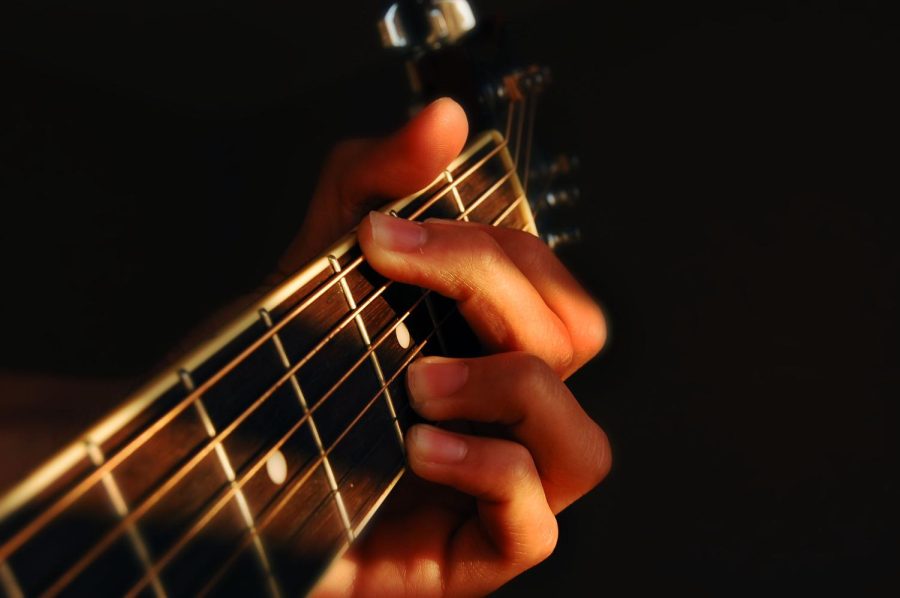The Evolution of Guitars
April 27, 2022
The guitar is the most popular instrument in the world, followed by the piano. About 10% of people in the world have played, or play guitar, which means that 712 million people play guitar. The instrument is beautiful and versatile, especially with today’s various effect pedals. But where did this instrument begin? The guitar we know today derives from the medieval instruments, the oud, and the lute, which predate human history.
“Many say that a man known as Lamech, who was Noah’s grandfather and the sixth grandson of Adam and Eve, designed the Arab precursor to the guitar.” wrote the College of Contemporary Music. Apparently, Lamech was inspired to design the oud after hanging the body of his dead son from a tree.
The next shape of the guitar was the lute. It had a variety of shapes and sizes, generally with a curved back. The first record of a lute-like stringed instrument appeared in 3500 to 3200 BCE in Southern Mesopotamia. By the end of the Renaissance, the lute had evolved into a 20-stringed instrument.
Eventually, the lute’s popularity diminished, and Baroque guitars became prominent in Spain around 1600 to 1750. They had five strings and moveable frets, making the instrument easy to play. Also popular in Spain was the vihuela, which you might see mariachi groups still use today.
By 1790, the evolution of Spanish guitars ended with what is now the standard body time and six strings, but they were still small until Antonio de Torres Jurado changed everything. Jurado’s guitars had a broad body, a thin belly, and an increased curve at the waist. Instead of wooden tuning pegs, he used machined heads. Europeans copied this instrument with steel strings. When Europeans brought this instrument to America, it became the modern guitar.
Christian Frederick Martin was a German guitar maker who immigrated to America, he created the flat top form of the acoustic guitar. He used an X-bracing to help the guitar body cope with modern steel strings, another game-changer. The steel strings made guitarists change their playing style, forcing them to use picks more often.
Then came the big names. Orville Gibson, who you may know from the Gibson guitar company, created the archtop guitar. Gibson is still known for their huge guitars, with bodies similar to cellos, giving the instrument a larger sound.
In 1931, George Beauchamp and Adolph Rickenbacker made the first electric guitar. Rickenbackers are still extremely popular today and used by everyone from The Who to Creedence Clearwater Revival in the 1960s. In 1951, Leo Fender invented the first Fender Telecaster, and in 1952, the first Les Paul was made.
“It’s pretty impressive that the companies that made the first electric guitars are still so popular today,” said Alex Rauda, a junior at AHS.
From the lute to the classic Les Paul, guitars have come a long way. Today, we have electric guitars shaped like anything you could imagine, and effect pedals that’ll blow you away. Though we’ve advanced this instrument so much, most guitarists still use the tried and true Telecaster and Les Paul.
Photo Courtesy of WIKIMEDIA COMMONS

